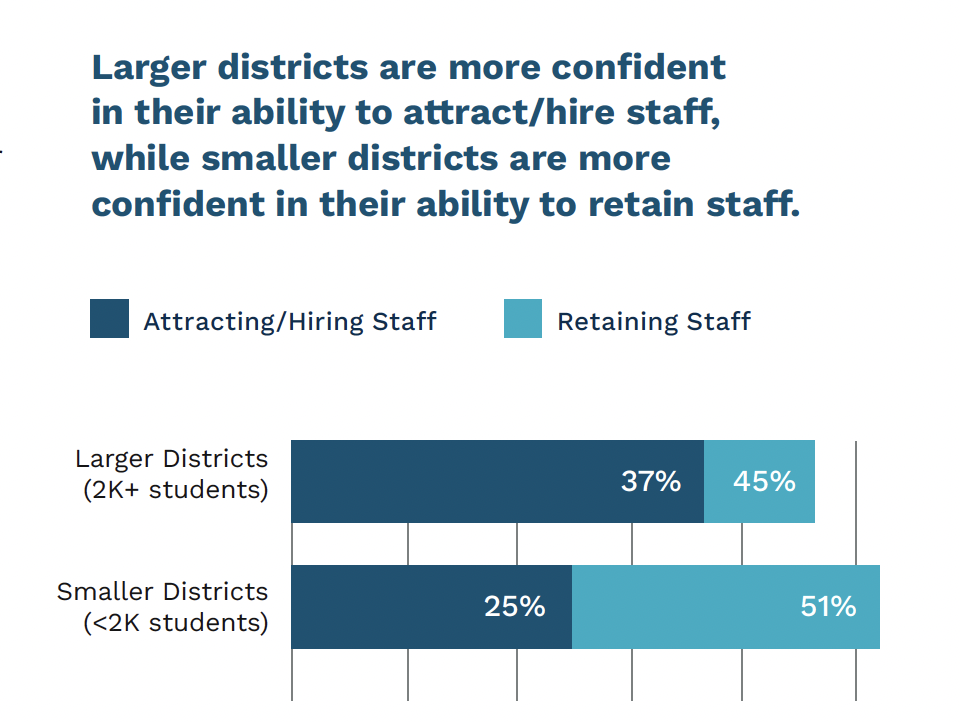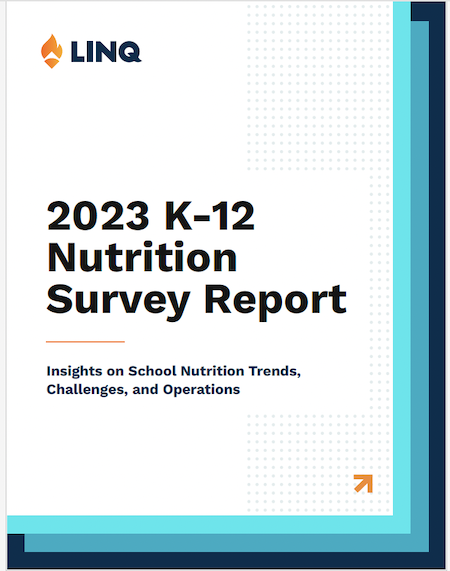It’s True: Short Staffing Impacts 52% of K-12 Nutrition Programs
Staffing challenges continue in K-12 nutrition. It surfaced as a top concern for K-12 nutrition leaders in our new 2023 K-12 Nutrition Survey Report. 52% of respondents agreed that staffing shortages hurt their ability to operate efficiently.
That’s consistent with the 2022 Department of Education School Pulse Panel finding that more than half of districts felt understaffed going into the school year. K-12 leaders across the board know that finding, hiring, and retaining qualified staff members matters more than ever.
While K-12 nutrition staffing challenges aren’t new, and they’ll likely persist into the next school year, there’s room for optimism. Food Service Directors and K-12 administrators can take proactive steps to address staffing challenges and minimize their impact on operational efficiency.
Digging deeper into our K-12 nutrition staffing insights
While school nutrition leaders generally recognize staffing challenges, our data reveals trends in how larger vs smaller districts experience staffing shortages. Larger districts report confidence in their ability to attract staff, while smaller districts feel more confident in their ability to retain staff.
Although these challenges are two sides of the same coin, they each call for different strategies:
| Strategies to Boost Recruiting: | Strategies to Boost Retention: |
|
|
|
|
|
|
Looking at the results from our survey, smaller districts might focus more energy on recruiting efforts, making faster hiring decisions, and communicating throughout the process to beat competing districts to the offer. Meanwhile, larger districts looking to improve retention could invest more personalized attention in employee feedback, reviews, and career progression. Getting employees more invested in their growth within your district is a great way to increase the chances they’ll stay.
Although data shows the situation differs at large and small school districts, recruiting, hiring, and retention will likely dominate decision making for years to come. Even nutrition directors confident in their retention rate can still alleviate recruiting and hiring pressure by inspiring more employees to stay on the job longer.

Turning attention toward hiring and retention
Even with staffing shortages impacting more than half of K-12 nutrition programs in our survey, 83% of respondents still rate their program as “Very Good” or “Excellent.” It’s a testament to the way school nutrition staff across every state continue to roll up their sleeves and serve nutritious meals for the students who depend on them throughout the year.
However, short staffing takes its toll on any team. Supporting dedicated food service workers means supplying the resources they need to succeed in their role—and that starts with ensuring they’re not pulling double-duty. That means hiring enough employees to do the job and giving them adequate reasons to stay on in the coming years. Focusing on recruiting, hiring, and retaining more school food service employees is essential to program success.
Filling K-12 nutrition ranks by hiring new, high-quality staff
Reliable funding is a key advantage K-12 nutrition departments have in attracting and hiring staff. Regulations affecting the nonprofit food service account shield school nutrition departments from funding and budget cuts other departments face. It’s an important aspect of the job many applying for their first K-12 nutrition position may not realize. It’s worth mentioning to further entice quality recruits.
That said, a stable funding source is only one piece of the puzzle.
Many of those interested in non-teaching school district jobs want the flexibility of part-time work. For example, a stay-at-home parent may finally have all their kids in school but still needs flexible hours for picking them up from school and shuttling them to activities. Positioning nutrition jobs as having negotiable hours can make them attractive opportunities for those people.
Another angle to consider is generating additional revenue to fund hiring and recruiting. This may create budget for hiring more staff and offering other incentives such as bonuses or additional hours. The more school nutrition departments can build out their operations, the more dollars are available to cover all the costs involved with running a school meals program and further support hiring new employees.
Ideas for generating additional recruiting and hiring funds:
- Expand snack options for sale
- Sell a la carte food and drinks
- Launch a school catering service
Marketing nutrition staff openings to a wider audience
Just as you market your nutrition program to children and families, it’s important to market your nutrition openings effectively. Partner with your HR and Communications departments to promote any openings more effectively digitally.
That could mean featuring jobs on the district’s job board, sharing the vacancies in back-to-school communications, or promoting them on social media. Include the information on your unique nutrition webpages and if you operate any catering services, consider including an insert or flyer when delivering those catering orders.
Partner with your high schools and career centers to identify any students interested in pursuing a culinary career to get their start in the lunchrooms. The broader and wider you can throw your net, the better chances you have to attract nutrition workers and build out your roster to ensure that your program succeeds.
Driving K-12 nutrition staff retention with gratitude and support
K-12 administrators and Food Service Directors often enjoy showing their appreciation for staff through salary increases, celebrations, or gifts whenever possible. But it isn’t always about the extras you can offer. Supporting their day-to-day efforts and dedication to the job is vital for K-12 nutrition staff retention.
Noticing and appreciating the extra effort during periods of staffing challenges is a great start. Go a step further by connecting individually or with staff members as a group to find out what would help to make their job easier. Results from these conversations can be surprising—it could be an equipment repair like a sticky refrigerator handle, or it could be as simple as a preferred brand or style of cleaning equipment. Acknowledging and responding to their needs, however small, shows that their work is highly valued.
Technology can also help make everyone’s job easier by simplifying processes and eliminating tedious tasks—like writing menus from scratch or recording inventory. A modern system with real-time FOH and BOH integration, like only LINQ School Nutrition offers, gives everyone confidence in data accuracy and alleviates headaches around reporting.
Simplifying management and reporting gives back time for staff to focus on the most impactful and rewarding parts of their job. These types of operational improvements can bring big benefits in stress reduction and career satisfaction.
Staffing challenges are only part of the story—get more K-12 nutrition insights
Staffing challenges are nothing new to K-12 nutrition departments. While school nutrition departments may be resilient to sudden change and upheaval, some challenges persist, and a proactive approach can help mitigate these impacts.
Yet, there’s more to the story than K-12 nutrition department staffing challenges. Learn more about the other issues facing school food service programs in our new report. Plus, get tips and ideas for overcoming them for long-term success.

